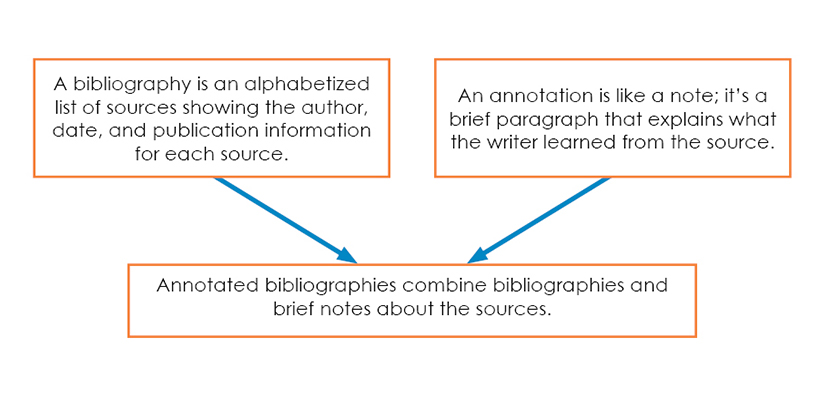
Instructors often assign annotated bibliographies as a means of helping students think through their source’s quality and appropriateness to their research question or topic.
Although it may take a while to complete the annotated bibliography, the annotations themselves are relatively brief.
Annotations may include three things:
You need a relatively narrow focus (a relatively narrow research question or a working thesis sentence with a clear angle) in order to gain value from doing an annotated bibliography.
As you research, select the sources that seem most related to your narrow focus. Skim the sources first; then more carefully read those that seem useful to your research focus.
In your annotation for each entry in your annotated bibliography, summarize the source. Reproduce the author’s main ideas in your own words. Be careful to change the wording and the structure as you put the information from the source into your own words.
After you summarize, analyze the source. Ask yourself questions such as the following: Is there enough relevant information to address my narrow focus? Does the author delve deeply into the subject as opposed to offering a general overview? What type of evidence does the author use? Does the author use statistical information accurately, to the best of my knowledge?
Finally, evaluate the source’s usefulness to the narrow focus of your research. Make connections between the source and your focus for your project.
Be sure to use the assigned bibliographic style (usually standard MLA style for English courses) to create the bibliography entry that starts off each annotated source on your list.
In most annotated bibliographies, your summary, analysis, and evaluation for each source becomes the body of your annotation for that source. Some annotated bibliographies may not require all three of these elements, but most will. Be sure to consult your professor and ask questions if you’re unsure about the required elements within each entry of your annotated bibliography.
 |
|
Note: This content is from Excelsior Online Writing Lab website, an excellent source for writing
a research paper from start to finish. Excelsior OWL is licensed under a Creative Commons Attribution.

LinkedIn Facebook Instagram